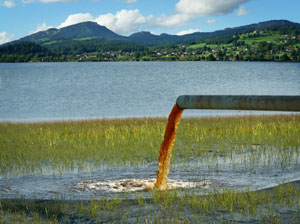CONTACT:
Liz Judge, Earthjustice, 415.217.2007, ljudge@earthjustice.org
Shazia Manji, Physicians for Social Responsibility – Los Angeles (PSR-LA), 213-689-9170, smanji@psr-la.org
Lauren Whittenberg, Environmental Defense Fund, 512-784-2161, lwhittenberg@edf.org
64 Environmental and Community Groups File Petition Demanding Federal Limits on Toxic Oil & Gas Well Air Pollution
Concerned about health impacts of drilling rush, groups push EPA to act swiftly
WASHINGTON, DC – A large coalition of 64 local, state and national groups filed a petition today urging the U.S. Environmental Protection Agency (EPA) to protect public health by setting pollution limits on oil and gas wells and associated equipment in population centers around the U.S.
The public interest law organization Earthjustice filed the petition on behalf of local and national groups with members and constituents across the U.S., including Clean Air Council, Clean Air Taskforce, Downwinders at Risk, Environmental Defense Fund, Global Community Monitor, Natural Resources Defense Council, Physicians for Social Responsibility-Los Angeles, Sierra Club, and WildEarth Guardians. The petition explains why the EPA should issue rules that would require oil and gas companies to limit toxic air pollution from oil and gas wells in urban, suburban and other populated areas as the Clean Air Act expressly provides.
In recent years, the pace of oil and gas drilling has increased drastically. As of 2011, oil and gas wells in the U.S. numbered more than 1.04 million. Current estimates project that as many as 45,000 new wells could be drilled each year through 2035.
Available data suggest that at least 100,000 tons per year of hazardous air pollution from oil and gas well sites—such as benzene, formaldehyde, and naphthalene—are currently going freely into the air. These pollutants have been linked to respiratory and neurological problems, birth defects, and cancer.
“More than 150 million Americans now live near oil and gas wells or above shale areas where companies are looking to drill or engage in hydraulic fracturing, and EPA needs to set standards that restrict the hazardous air pollutants they put into the air,” said Earthjustice attorney Emma Cheuse, who filed the petition on behalf of the groups. “Oil and gas wells release chemicals linked to cancer, birth defects, and respiratory disease, and EPA should protect our communities, especially our children, from exposure to these hazards.”
“As fracking encroaches upon communities throughout the American West, we need relief from unchecked toxic air pollution,” said Jeremy Nichols, WildEarth Guardians’ Climate and Energy Program Director. “Oil and gas wells might seem small, but together they are endangering our health and welfare in rural and urban areas alike, poisoning the very skies that make the West such an amazing place to live.”
“Since 2010, the Texas Commission on Environmental Quality here has been promising to increase regulation and inspection of the booming oil and gas exploration and development occurring at unprecedented levels, even for Texas,” noted Cyrus Reed of Sierra Club’s Texas Lone Star Chapter. “But despite some baby steps, oil and gas development remains largely unregulated and the Texas legislature has handcuffed the agency from taking additional regulatory steps. It’s time for the EPA to step in and do what Texas leaders have been unable to do: protect Texans from the unmitigated emissions of toxic air pollutants which poison our lungs and cause smog throughout cities like Dallas, Fort Worth, San Antonio and Midland.”
“Every Oklahoman has the right to clean air to breathe. Currently Oklahoma air continues to deteriorate and instances of illnesses directly connected to air quality such as asthma continue to increase. A significant cause for this is the dramatic increase in oil and gas drilling in our state over the past decade,” said Sierra Club Oklahoma Chapter Director David Ocamb.
“Californians’ air, health and food supply are under assault from increased oil and gas production using fracking, sanctioned by our Legislature and Governor Brown,” said Denny Larson, Executive Director of the Global Community Monitor based in Richmond, CA. “It’s time for EPA to do its job and enforce the Clean Air Act and end the loophole that is poisoning our air.”
“Oil and gas wells release chemicals that have clearly and definitely been linked to health harms from nose bleeds and head aches to cancer, birth defects, and respiratory disease,” saidJames Dahlgren, MD, an internist with a sub-specialty in toxicology and member of Physicians for Social Responsibility-Los Angeles. “I’ve witnessed the harm these toxics cause to people and given everything we know about these pollutants, the EPA must take action to protect communities from exposure to these clear hazards,” he added.
“Almost a decade of un-and-under-regulated fracking has transformed North Texas into a sacrifice zone for the gas industry, with conservative estimates of over 1,000 tons of hazardous air pollution being released annually from industry sources. Breathing this toxic air pollution has left a well-documented trail of illness and disease throughout the Barnett Shale. EPA needs to do its job and protect frontline victims of fracking by reducing the toxic fallout from the practice,” said Jim Schermbeck of the Dallas-Ft. Worth-based clean air group Downwinders at Risk.
“Pennsylvania residents living near shale gas operations deserve much stronger public health protections from EPA,” said Matt Walker, community outreach director of Clean Air Council. “EPA’s current standards for flaring at new oil and gas wells do not address the many other types of ongoing operations at oil and gas wells that emit significant amounts of toxic air pollution. The Council and its members urge EPA to act quickly to greatly limit air pollution from oil and gas infrastructure.
“Our nation should not ask communities to trade clean air for cheap energy,” said Mark Brownstein, Environmental Defense Fund’s Associate Vice President & Chief Counsel, US Climate & Energy. “Anyone living near an oil and gas development deserves to know that all necessary steps are being taken to avoid hazardous air pollution. Strong regulation is necessary to provide that assurance.”
“The scientific evidence is piling up to support what people around the country have been reporting for years: fracking-related air pollution can threaten the health of neighboring communities,” said Miriam Rotkin-Ellman, senior scientist at the Natural Resources Defense Council. “The oil and gas industry must not be allowed to continue spewing poisons into the air. EPA needs to step up to protect the health of Americans living near fracking operations across the country.”
###
RESOURCES
- The petition filed today can be found at: http://earthjustice.org/documents/legal-document/2014-petition-for-federal-limits-on-toxic-air-pollution-from-oil-gas-wells
- To see the population centers that would receive protection under new EPA rules, look at Table 5 of the petition, or the maps listed below.
- A list of groups that signed onto today’s petition can be found at: PAGE 66-67 of petition.
RESOURCES INCLUDED AT THE END OF THE PETITION:
In Appendix A: Emissions and Covered Population Centers
- Table 1 – NSPS v. NESHAP Coverage Comparison: Regulation of Wells and Associated Equipment
- Table 2 – Oil and Gas Sector Summary: Comparison of Emissions Controlled by EPA’s Final Rule (“Controlled”) vs. Emissions that Could Have Been Controlled by EPA’s Final Rule But Were Not (“Not Controlled)
- Table 5 – Presence of Active Oil and Gas Wells in — (1) Combined Statistical Areas (CSAs) with population greater than 1 million and (2) Metropolitan Statistical Areas (MSAs) not located in such a CSA
In Appendix B: Maps
- Map 1 – U.S. Shale Plays and Population Centers
- Map 2 – U.S. Oil and Gas Wells and Population Centers
- Map 3 – California: Oil and Gas Wells, Shale Plays and Population Centers
- Map 4 – Colorado: Oil and Gas Wells, Shale Plays and Population Centers
- Map 5 – Pennsylvania: Oil and Gas Wells, Shale Plays and Population Centers
- Map 6 – Texas: Oil and Gas Wells, Shale Plays and Population Centers
- Map 7 – Ohio: Oil and Gas Wells, Shale Plays and Population Centers
- Map 8 – Louisiana: Oil and Gas Wells, Shale Plays and Population Centers
- Map 9 – Michigan: Oil and Gas Wells, Shale Plays and Population Centers
- Map 10 – New York: Oil and Gas Wells, Shale Plays and Population Centers
- Map 11 – Oklahoma: Oil and Gas Wells, Shale Plays and Population Centers
In Appendix C: List of health and other studies.


